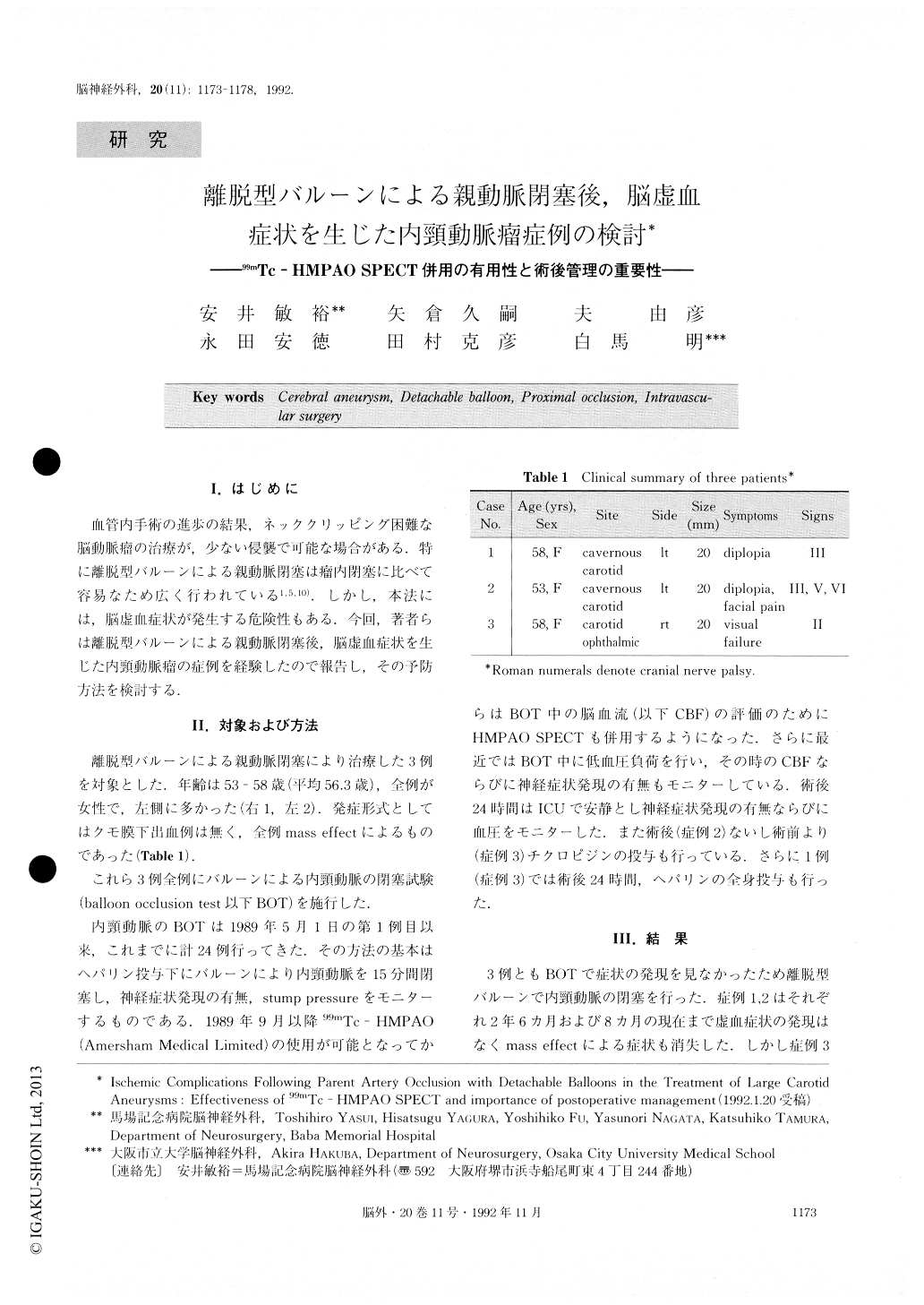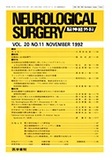Japanese
English
- 有料閲覧
- Abstract 文献概要
- 1ページ目 Look Inside
I.はじめに
血管内手術の進歩の結果,ネッククリッピング困難な脳動脈瘤の治療が,少ない侵襲で可能な場合がある.特に離脱型バルーンによる親動脈閉塞は瘤内閉塞に比べて容易なため広く行われている1,5,10).しかし,本法には,脳虚血症状が発生する危険性もある.今回,著者らは離脱型バルーンによる親動脈閉塞後,脳虚血症状を生じた内頸動脈瘤の症例を経験したので報告し,その予防方法を検討する.
Three patients with large carotid aneurysms were tre-ated by parent artery occlusion with detachable balloons. Of these, 2 had intracavernous carotid artery aneurysms and one had a carotid-ophthalmic aneurysm. All patients underwent a formal balloon occlusion test and tolerated it well. One patient with a carotid-ophthalmic aneurysm, however, developed postoperative ischemic effects.
This case was that of a 55 year-old female with right visual disturbance. Her middle cerebral artery flow had been compromised (luring test occlusion under inducedhypotension. Although initially intact after balloon occlusion, she was found to be hemiplegic 24 hours later.She subsequently developed multiple small infarcts which were shown on MRI and which corresponded ex-actly to the previously demonstrated region of decreased flow during testing.
This ischemic complication is possibly due to hypo-perfusion, but embolism from the thrombosed aneurysm can not be denied. To prevent these complications, an ex-tracranial-intracranial artery anastomosis prior to parent artery occlusion should be considered if the preoperative 99mTc-HMPAO SPECT shows a compromised cerebral blood flow. In addition to this, postoperative anticoagu-lant therapy should he given even if test occlusion was well tolerated clinically.

Copyright © 1992, Igaku-Shoin Ltd. All rights reserved.


